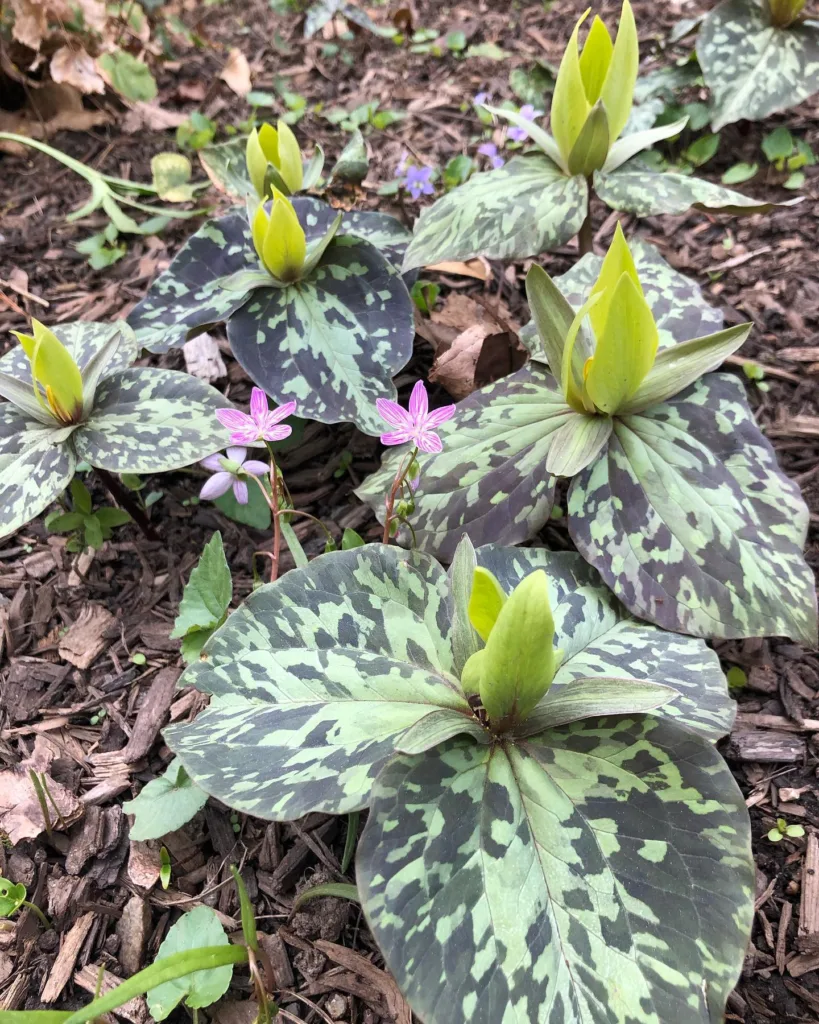
What is Oxalis corniculata?
Oxalis corniculata, also known as creeping woodsorrel or yellow wood sorrel, is a persistent little plant that can be both charming and frustrating. I first encountered it in my garden, its small yellow flowers peeking out from amidst the greenery. At first, I found it quite lovely, adding a pop of color to the landscape. However, as it began to spread rapidly, I realized it was becoming a nuisance.
569 Species in Genus Oxalis
Creeping woodsorrel is characterized by its clover-like leaves, which consist of three heart-shaped leaflets that fold down at night or in low light conditions. It produces small, yellow flowers with five petals that bloom throughout the growing season. The plant spreads rapidly via creeping stems (stolons) and can quickly colonize lawns, gardens, and other disturbed habitats.
While Oxalis corniculata is considered a weed in many areas due to its aggressive growth habit, it is also valued for its edible leaves, which have a tangy flavor and are sometimes used in salads or as a garnish. However, it should be consumed in moderation due to its oxalic acid content, which can be harmful in large quantities.
In addition to its culinary uses, Oxalis corniculata has also been used in traditional medicine for various purposes, including treating skin conditions, fevers, and digestive issues. However, it is important to use caution when consuming or using this plant for medicinal purposes, as it may have toxic or irritant properties in some individuals.
Oxalis Corniculata vs Oxalis Zinfandel Plant
I’ve found Oxalis Corniculata charming with its delicate, shamrock-like leaves that spread out like a lush carpet. On the other hand, Oxalis Zinfandel caught my eye with its striking dark foliage that contrasts beautifully against lighter greens in my garden.
Oxalis Corniculata vs Stricta
Oxalis Corniculata has been a cheerful addition to my indoor plant collection, thriving with its vibrant green leaves and occasional small yellow flowers. Meanwhile, Oxalis Stricta surprised me with its neat, upright growth and dainty white blossoms that peek through its dense foliage, making it a standout in my outdoor pots.
How to control Oxalis corniculata?
Controlling Oxalis corniculata requires vigilance and persistence. Since it spreads through both seeds and creeping stems, it’s essential to remove it as soon as it appears to prevent further infestation. Regularly inspecting the garden and promptly removing any new growth can help keep it under control. Additionally, creating unfavorable conditions for its growth, such as improving soil drainage and promoting the growth of competing plants, can help suppress its spread.
How to distinguish Oxalis californica from Oxalis corniculata?
Distinguishing Oxalis californica from Oxalis corniculata can be tricky, especially since they share some similarities in appearance. However, there are a few key differences that can help differentiate them. Oxalis corniculata typically has smaller leaves and flowers compared to Oxalis californica. Additionally, the leaves of Oxalis corniculata often have a distinct heart or kidney shape, while those of Oxalis californica tend to be more rounded or triangular.
Is Oxalis corniculata a weed?
Yes, Oxalis corniculata is commonly considered a weed, especially in gardens and lawns where it can quickly take over and crowd out desirable plants. Its ability to spread rapidly through both seeds and creeping stems makes it particularly troublesome for gardeners.
Is Oxalis corniculata edible?
While some people may consider Oxalis corniculata to be edible, I personally wouldn’t recommend consuming it. Although it’s not considered highly toxic, it does contain oxalic acid, which can be harmful in large quantities. Additionally, it’s difficult to guarantee the safety of wild plants unless you are absolutely certain of their identity and purity.
What does Oxalis corniculata mean?
The name “Oxalis corniculata” has Latin roots, with “Oxalis” referring to the genus of the plant and “corniculata” meaning “small horn” or “horn-shaped.” This likely describes the shape of its seed pods or the way its stems spread out like horns along the ground. Overall, the name captures some of the distinctive features of this prolific little plant.
If i die, water my plants!



